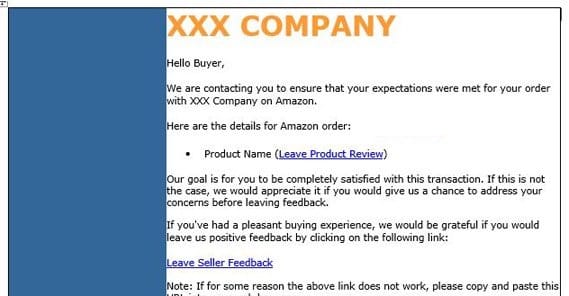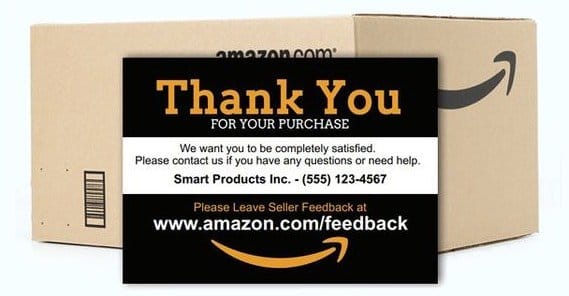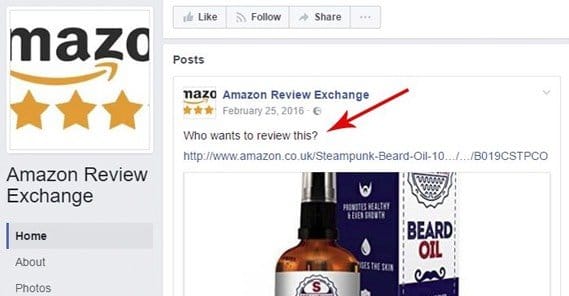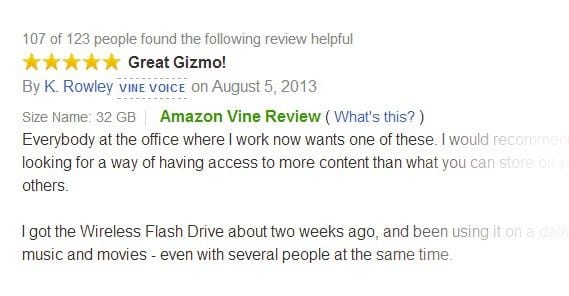15 Ways to Get More Reviews on Your Amazon Products

Reviews are incredibly important. As much as 80% of consumers use reviews the same way they would personal recommendations. 85% have read reviews, and 73% says positive reviews make them trust a business or product more. You can read an older survey here, and I’m guessing the numbers have only grown in favor of reviews.
At the same time, it’s difficult to get reviews. There’s a notorious phenomenon where users who are satisfied generally forget about their transaction and move on with their lives. Meanwhile, it’s the dissatisfied users who end up coming back to leave reviews, generally negative. It skews reviews away from the positive, so you need to fight to out-weigh the few bad experiences.
How can you get more positive reviews, or even just more reviews in general? Here are some techniques I’ve seen and used.
1. Provide Excellent Customer Service
Most of the people who purchase from you won’t be leaving reviews naturally. The most likely group to do so are likely to be the disgruntled customers who get a dead or broken product in the mail. Forestall their negative reviews by making it very easy to contact you for customer service, and provide that service right away.
A lot of brands find themselves hesitant to send out free replacements and eat the cost of a bad or broken product, and I can understand why when you’re running on thin profit margins. However, negative reviews and a reputation for poor customer service can stunt your growth and make it harder to sell more, whereas good customer service might set you into the red for a week but lead to much greater conversions down the road.
2. Send a Follow-Up Email
When a customer buys your product, it should come with everything they need to get started. However, it can be a good idea to reach out to them a week or two after the expected date of delivery and get in touch. I like to send out a general all-purpose email.
My sample email includes an initial question of whether or not the user is satisfied. If they’re satisfied, I have a call to action for leaving a review – an honest review, not requesting a 5-star review – and whatever other action the user wants to take. I then follow up with informational links to user guides, advanced tips, or other links that might be useful for the reader. Closer to the end, if the user isn’t satisfied, I have customer service links.
If you don’t want to cram all of this into one email, you can spread it out over several. The first message should be a purchase confirmation with some helpful links to help the user get assistance or tutorials for the product if necessary. The second, sent later, can be aimed at helping the user with any problems and asking them to leave a review. You can follow up even later if they haven’t left a review, asking them if they’ve run into any trouble and providing them with customer service links.
3. Ask for Reviews on Social Media
Chances are, a lot of your followers on social media are also people who have purchased something from you at some point. If at all possible, ask them to head to the site they purchased from and leave a review.
Now, before you do this, be aware of a few things. Some sites, like Yelp, strongly discourage asking for or soliciting reviews, and might put limits on your profile if they find you doing so. Amazon is less restrictive, but you can still run into issues if people start leaving reviews when they bought the item from another store. Generally you want real reviews from certified purchasers, and ideally you want them to be recent as well.
4. Solicit Reviews from Top Reviewers
Reviewing products has been, to a certain extent, gamified on Amazon. Every “genre” of product has a selection of top reviewers, people who have reviewed a wide range of products in that niche, and who are always open to reviewing more products. These people leave thoughtful, detailed reviews based on hands-on experience and generally post photos of products in action as well. You can find these people through the Amazon Vine program or by looking for top reviewers on popular products in your niche.
Often, in the reviewer profile for these users, you can find an email address you can use to contact them. Reach out and ask if they would be interested in leaving a review for your product. Make your case. Also be aware that if you have any sort of requirement for the review, they will turn you down. Keeping an air of impartiality is important for their jobs as reviewers. You’ll have to send out a free product, and the review will be labeled as such, but it’s still generally better than not having a review at all.
5. Send a Call to Action in the Package
It doesn’t take much to print out something the size of a business card. Just create a little call to action on a small piece of paper. Thank the user for their purchase, give them a quick shortlink or email address for questions, and ask them to leave a review once they’ve had time to play around with the product and make sure everything works. It’s essential that any link you provide is short and easy to type in, and you might consider including a QR code as well for those users who have a mobile device handy.
It gets tricky to do this if you’re a reseller and thus don’t have much interaction with the people who actually fulfill orders in your supply chain. In some cases, you can talk to the wholesaler and ask that they include something from you when they ship one of your orders. In other cases, they won’t want to do any customization at all, and you’ll have to take a different route, like the emails listed above.
You can also include a coupon, with or without a time limitation, for a discount on a future purchase. You can even have them “coincidentally” next to each other in the package. Just don’t directly say “you can claim a coupon code after reviewing, go here to verify” or anything like that. That’s an incentivized review, and it’s something Amazon no longer allows.
6. Find and Solicit Bloggers
Much like finding the top reviewers on Amazon, you can find people in your niche who blog about your topics. These bloggers might already be customers of yours, or they might be advocates for your competitors, or they might be unaffiliated.
When you find these bloggers, do a little digging to see if they’ve said anything about your product before. It does you no good to offer an existing customer a free trial for review purposes, since they already have it. You also don’t necessarily want to pitch to someone who has already written a scathing negative review. However, if they reviewed you half a decade ago and your product has changed significantly in that time, you might still be able to offer them a chance to change their mind.
It’s the unaffiliated bloggers that you really want to get. You want to reach the people who are willing to leave an unbiased review when you give them a product. Granted, this is going to get you a review on a blog, not a review on Amazon, but sometimes bloggers – particularly bloggers in your niche – can be influential to your customers. And hey, as an added incentive, that blogger can use their own Amazon affiliate links to make a bit of cash on the side.
7. Turn to Facebook Groups
Just like there are people who review products for a living on Amazon, you can find similar groups of people on Facebook. You can find lists of these groups on sites like this one – just scroll down – though you’ll have to filter them for relevance.
My recommendation is to look into as many groups as you can find and read their rules. If they’re a closed group, they’ll have some instructions on whether or not they allow vendors to come in and share products to review. If they’re an open group, you can read posts and get a feel for how it works.
You need to find groups that review products in your niche, first and foremost. A software analytics company won’t do much good trying to get reviews from a group of moms that primarily review kitchen appliances. You need to make sure the group is active, too; if they haven’t had more than one or two posts in the last six months, there’s not going to be much of a response to your solicitation.
You might also want to double-check that they keep their association with you either disclosed or hidden depending on the rules. You don’t want the reviews flagged as fake, after all. Generally this means that the reviewer has to disclose that they were given a copy of the product for review purposes, which might influence the decision of the potential customers reading the review.
8. Join Amazon Vine
I mentioned it above; Amazon Vine is where a lot of the top reviewers get their products, and it’s Amazon’s way of formalizing and controlling incentivized reviews. It’s something that you as a vendor can get into, but there’s a catch. A few catches, actually.
First of all, as a vendor, you need to join either the Vendor Express or Vendor Central programs. Vendor Express can be found here, but Vendor Central is invite-only. On top of that, you often have to pay a steep fee for each product you want to make available in the Vine program. This can be thousands of dollars per product, so it’s not really something you can just drop in and do for your dropshipped phone cases. You also have a strict limit to the number of units you can send to Vine members, depending on the type and category of the product.
If you can get past all of those hurdles, you can list some products and get Vine reviewers to pick them up. Send out the products, get some highly professional qualified reviews, and reap the benefits. Hopefully, the volume of sales you make from that review is enough to outweigh the price of admission.
9. Consider a Review Contest
It’s possible that you can implement something like a review contest. The idea would be to keep track of your reviews, and collect the reviewers who leave a new review each month. Every month, give out some kind of prize – a product, a coupon code, features on your blog, or something of minor value – to a randomly chosen reviewer. You can pull from just the new reviewers, or from all reviewers, if you want to give older customers a chance to win.
The problem with this is that it is, again, a kind of incentivized review, which Amazon doesn’t like. Amazon cut off incentivized reviews a few years ago, after a lot of backlash about how their reviews were not to be trusted. For the good of the platform, they took action, and it has served them quite well. Unfortunately, it does make it harder for brands to build reviews on their products.
Regardless of how you get your reviews, two things matter; quality and quantity. You want as many reviews as you can get, but you want them to be legitimate. Going out and buying fake reviews is easy to spot, both as a customer and from Amazon’s perspective. To avoid having reviews removed or having your account sanctioned, stick to the legitimate ways to get reviews.
 ContentPowered.com
ContentPowered.com










